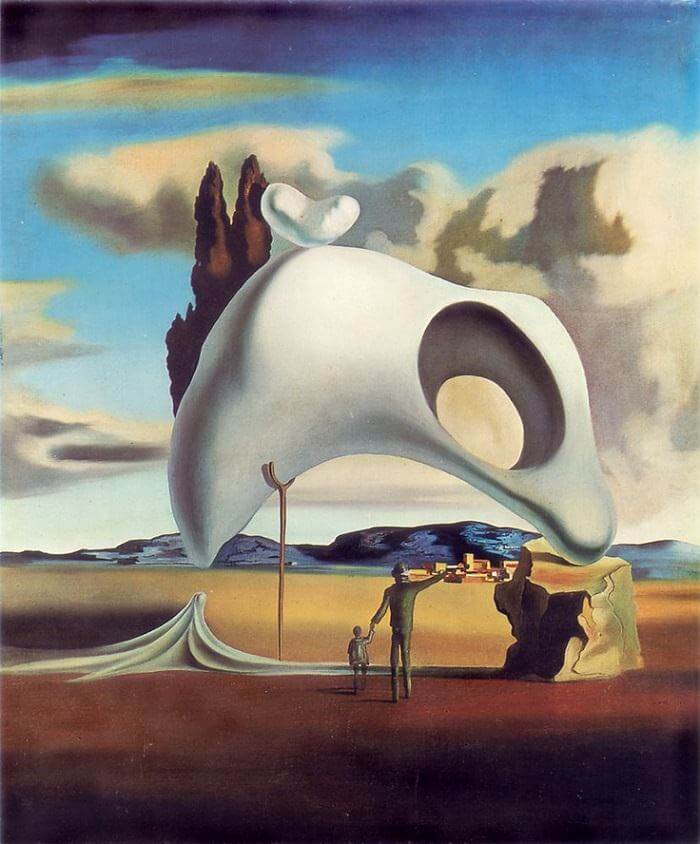Atavistic Ruins after the Rain, 1934 by Salvador Dali

Atavistic Ruins after the Rain represent a development of the scene in The Architectonic Angelus of Millet, in which the human figures have been metamorphosed into menhirs or sculptures. Actually they most closely resemble the sculptures of Dali's contemporaries, Hans Arp and Henry Moore, but Dali's treatment of them suggests that they are age-old rock formations.
Dali's own writings indicate that the 'remains' in this canvas are the result of erosion, but also of sexual conflict. The 'female' stone, which now dominates the picture, has devoured the male, in the process acquiring his characteristic void; all that remains of him is part of the display-like base of the object on The Architectonic Angelus of Millet. The figures viewing the 'remains' represent the infant Dali and his father, allied against the female sexuality of which Dali had such a horror.























